*This post may contain affiliate links. This means we may make a commission if you purchase an item using one of our links*
Have you ever wondered if our solar system has entities that could theoretically support life? If so then you’ve found yourself in the right place.
Here we’ll be going over 11 places most likely to support life in our solar system so that you have just little general knowledge to maybe destroy in the next pub quiz you go to, or maybe you simply want knowledge to impress your peers, either option is goo.
But first I do want to briefly go over the conditions necessary for celestial bodies to actually be habitable if you’re unfamiliar with the topic.
What Makes A Celestial Body Habitable?
Table of Contents
Potentially habitable planets should ideally showcase the same characteristics as Earth. These elements include the presence of liquid water on the celestial body, a present energy source (like the sun’s energy for example) and the presence of specific elements in the atmosphere (hydrogen, carbon, nitrogen, oxygen, phosphorus etc.)
If these elements are satisfied then the planet or celestial body in question should theoretically be habitable.
Then again this is just what we and life on Earth as we know it would require in order to survive so it is also possible in theory that harsher conditions could result in simple or even intelligent life being formed. With that being said let’s finally move on and actually discuss the places in our solar system that could potentially support life.
1. Europa
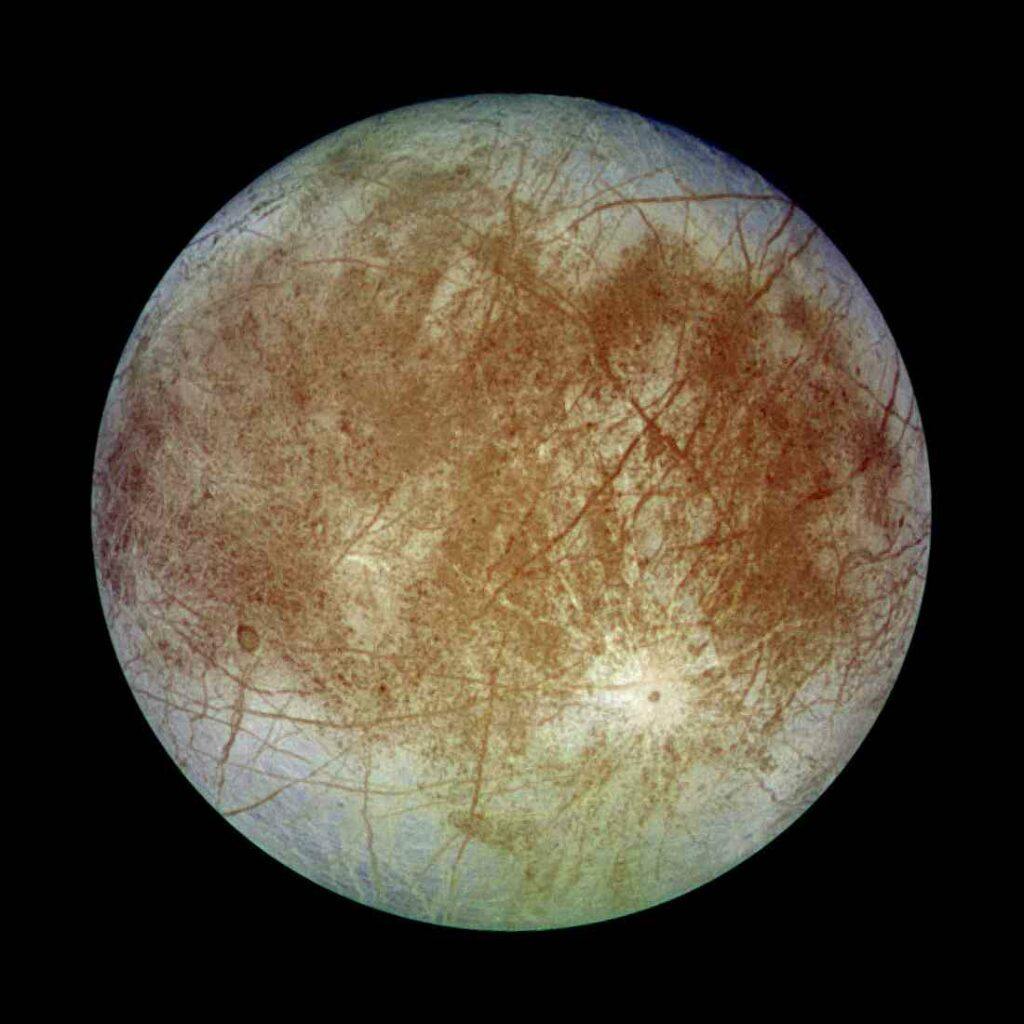
Europa is the first habitable candidate on this list and if you don’t already know about Europa, in short it’s one of Jupiter’s moons which is roughly 90% the size of our moon. It has a diameter of 3121.6km and is believed to have some of the largest oceans in our solar system, although the majority of its oceans lay under an ice surface.
These oceans are estimated to be extremely deep where the ice shell alone is roughly 24 – 32km deep whilst the depth of ocean roughly estimated to be 60 – 100km deep.
Another factor that looks promising for Europa’s habitability is that the zone in which it orbits the moon is the most habitable zone out of all the moons orbiting Jupiter. Of course in simple terms what I’m trying to say is that it’s not too close to Jupiter meaning it does not constantly get bombarded by its radiation and not too far away to be left cold and desolate.
Nevertheless, with daily temperatures of around -140 degrees Celsius it certainly wouldn’t be liveable for us.
Europa also does appear to have some oxygen molecules floating around its atmosphere but, once again these are quite thin and wouldn’t be great for humans. As for other forms of life, now that’s just a question that needs answering through more (A lot more) exploration.
2. Enceladus
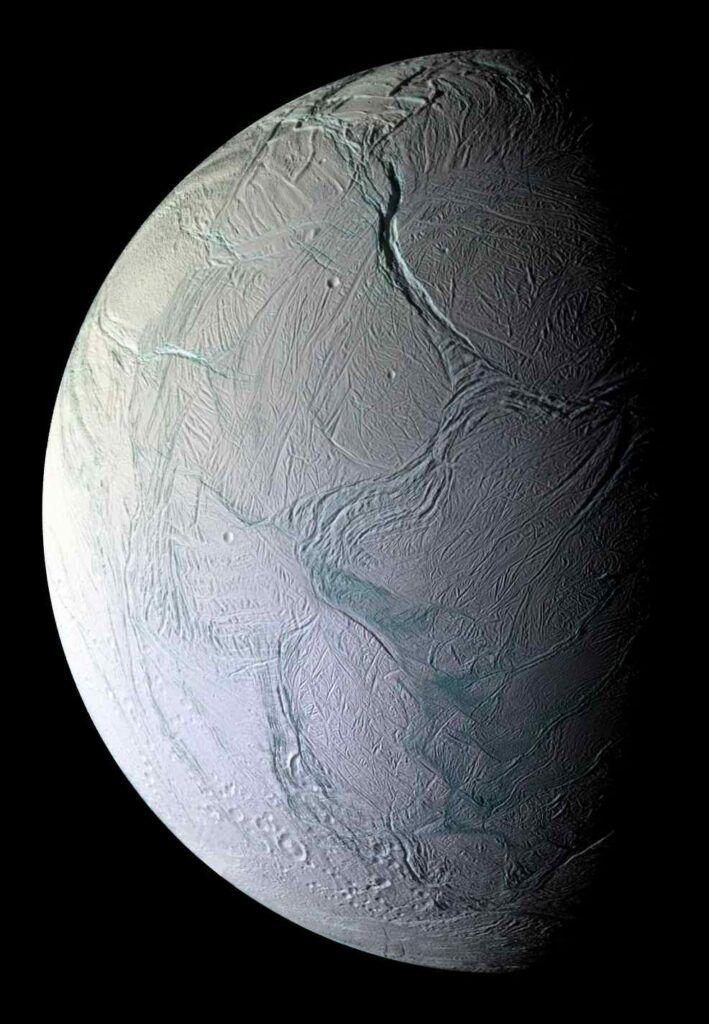
Enceladus is one of Saturn’s moons and quite small in comparison to Europa with a diameter of just over 500km however, even at its tiny size, this moon is quoted as being one of the more habitable entities in our solar system.
Only quite recently when the cassini spaceprobe did a fly by of this moon, observed to be among the brightest moon in our solar system, it discovered that the icy crust was the reason for Enceladus’ reflective surface (which fun fact is also the most reflective surface in the solar system)
The cassini space craft also observed organic matter spewing out at a consistent rate, which according to multiple studies (depicted by cosmos magazine here) states that Enceladus has at least 15 carbon atoms per each splurt of the organic molecules that are ejected into space.
Furthermore, beneath the icy crust the moon has an ocean of liquid salty water, which I’m sure doesn’t need too much explaining, after all liquid water is a big contributing factor for any form of life on a planet or celestial objects (as far as we know that is).
3. Ceres
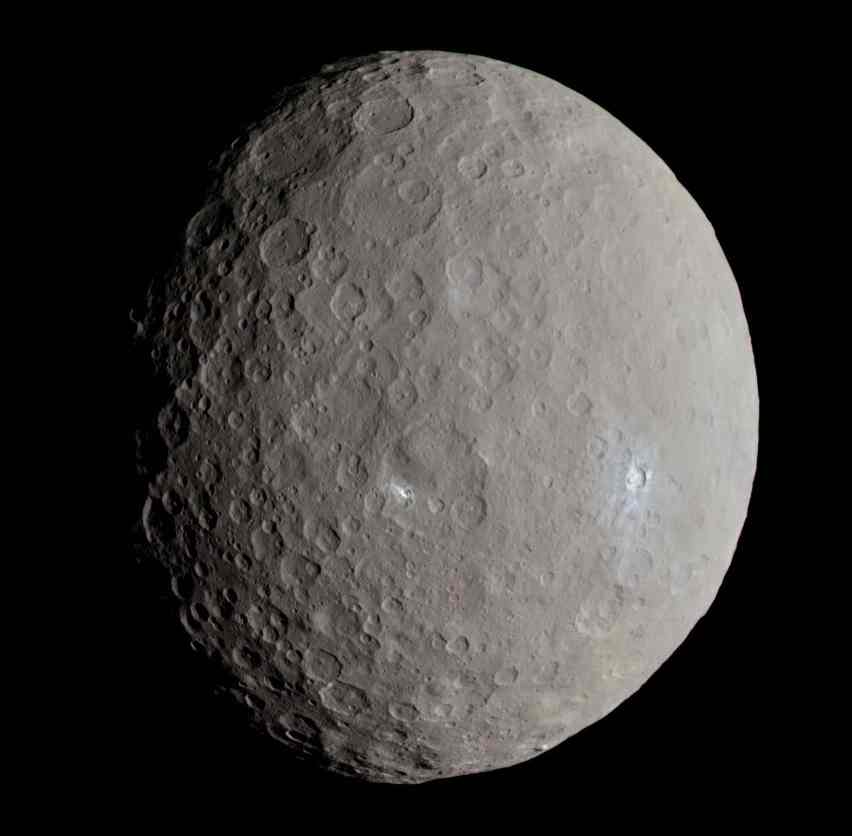
Ceres is a dwarf planet located between Jupiter and Mars in the asteroid belt, also the largest entity found in the belt.
Scientists estimate that 25% of the planets mass is water so, that would make it a pretty good place to potentially harbour life and be habitable. Of course the planets surface is icy cold and the liquid water is in turn located below the surface.
Furthermore, Ceres isn’t too far away from the Sun, which is certainly a good thing, but without a partner planet to warm it up, unless we figure out a way to terraform it as is the plan for Mars, most of us would die from frostbite first.
Nevertheless, in theory Ceres could potentially support life.
4. Callisto
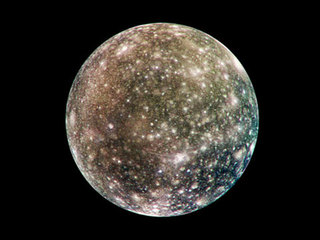
Callisto is yet another of Jupiter’s moon, this time its second largest coming in at 4820.6km and certainly the most worn out. This is obviously as a result of the moon taking hits from meteorites and forming a ton of impact craters on its surface.
When the Galileo spacecraft flew by Calisto, experts discovered that under the impact ridden crust roughly 250km down there could potentially be a liquid ocean. This was down to 2 main reasons.
Firstly, it was a question posed after discovering the regular fluctuations of Callisto’s magnetic field as the moon circled Jupiter implying a magnetic field and secondly due to the rocky crust and thin atmosphere.
Furthermore, the atmosphere is said to be composed of carbon dioxide and probably molecular oxygen which is always a good sign for habitability even if the atmosphere is very thin.
Of course the fact there are so many craters still visible on the moon does imply a lack of geological activity but, the presence of potential liquid water under the crust and a few of the more important organic molecules too makes it one of the better contenders for supporting life in our solar system.
5. Titan
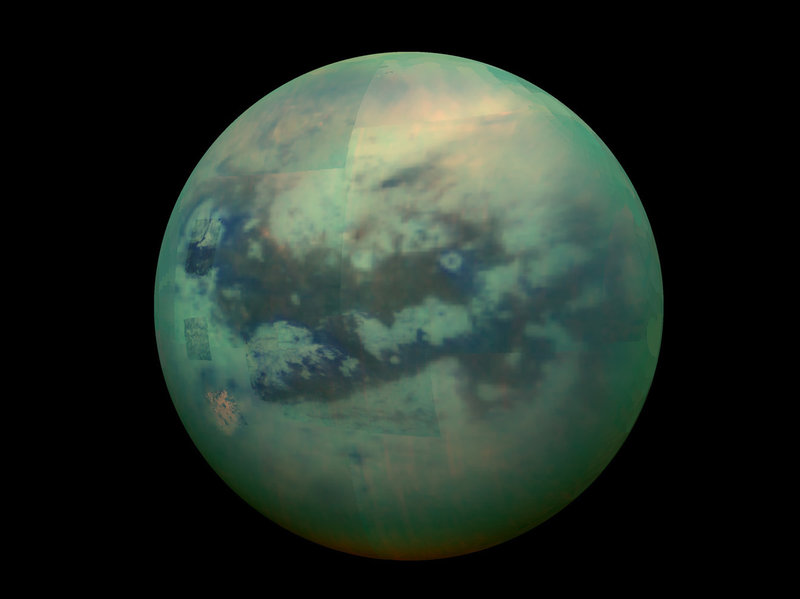
Titan is arguably the most complete entity/moon on this list that could potentially harbour life. This moon is Saturn’s largest coming in at a diameter of 5149.5km making it even larger than Mercury and being one of only 2 known moons in our solar system that are.
The reason as to why Titan may be habitable is because it’s the only other entity in our solar system (besides Earth) that supports liquid lakes.
Granted these lakes are made of ethane, methane and further topped up with Hydrocarbons through the rain produced on its surface which isn’t very habitable for us but, the presence of an atmosphere and liquids could potentially produce extremely exotic life outside of our knowledge.
Presence of liquid based rivers and carbon (a molecule that links to so many different elements in our universe) does hype this large moon up as potentially harbouring life, even if it wouldn’t be the most pleasant of destination for humans to travel to considering its bone shatteringly cold surface temperatures -179 degrees celsius.
6. Triton
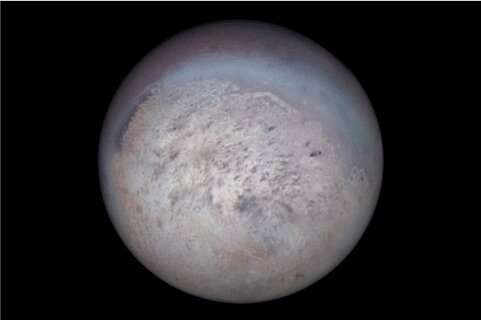
Triton is Neptune’s largest moon coming in at 2706.8km. Of course the chances of Triton harbouring life is a tough ask however, there are a few features about this ice covered entity that may suggest that life could potentially be possible here.
First of all, it is made of ice, mainly consisting of of nitrogen, methane and carbon monoxide which is found on the bodies surface. Furthermore, the cracks and volcanic features on the entity may suggest that Neptune is inadvertently heating Triton up which could potentially be warm enough to sustain life.
With that being said, the chances of Triton harbouring life at the moment would be extremely thin. This of course is taking into account it being regarded as the coldest entity in our solar with temperatures going as low as -237 degrees Celsius.
This actually makes it the coldest known object in our solar system.
7. Mars
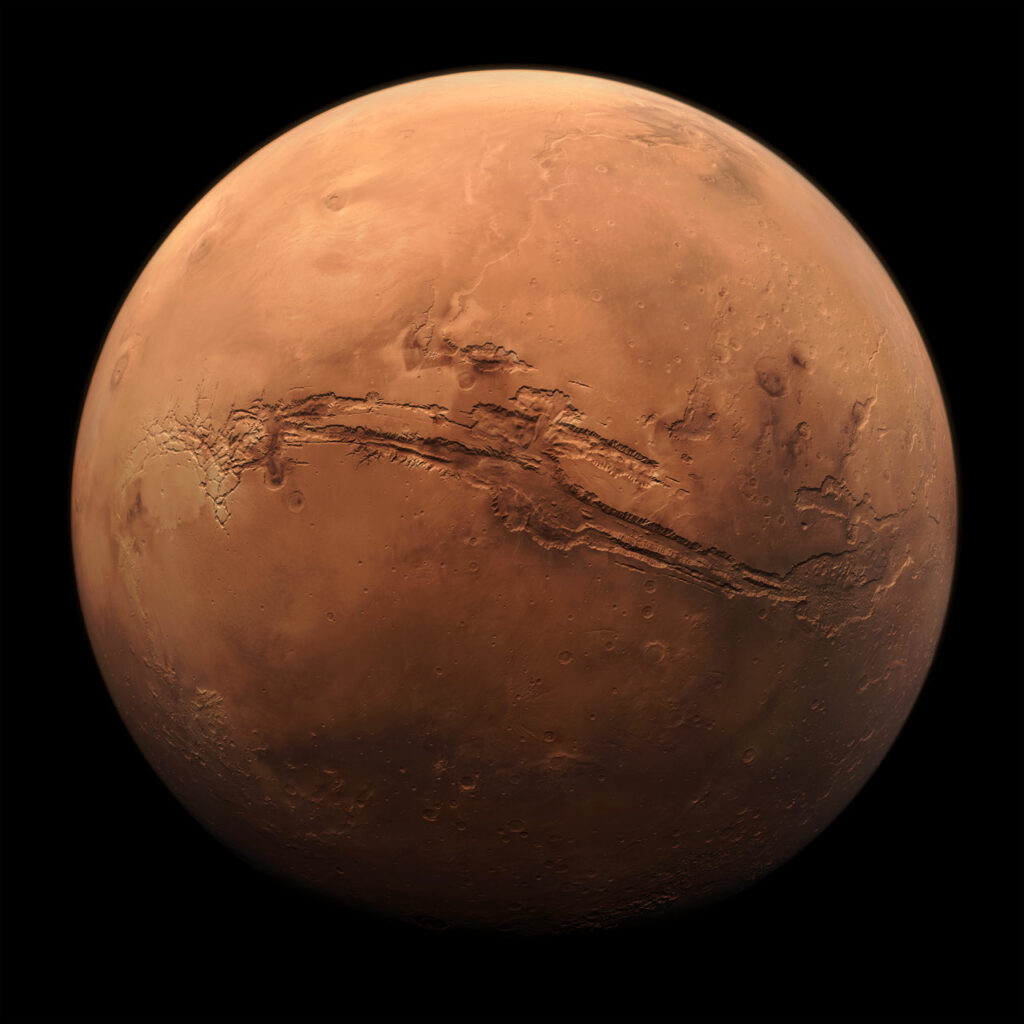
Of course Mars would be in this list, after all there a plethora of planned missions to the Martian surface and even talks about eventually terraforming and transforming it to become another home for us and other species from Earth.
There are a number of reasons why Mars is potentially habitable as it is and even considered to be the second most habitable place in our universe after Earth.
First of all there is potential for water to be present on the planet, particularly because NASA themselves confirmed this to be the case.
Mars’ equator temperatures are very livable considering they can reach a high of 20 degrees celsius but, these temperatures can also plummet to -100 degrees so, it wouldn’t be the easiest of places to live even if the conditions are far better than the majority of the potentially habitable places on this list.
Of course the presence of an atmosphere (even if it’s thin) is good for deflecting the harsh sun rays (to a degree), the gravity being only 38% that of Earth is regarded by scientists as sufficient for humans to reside in, the day and night rhythm is very much the same being 24 hours 39 minutes 35 seconds and finally, it is close enough to generate energy through solar panels.
Although Mars is far from habitable right now, there’s no denying its potential overall and I’m sure most of us have very high hopes for these potential manned missions to be a success!
8. Mimas
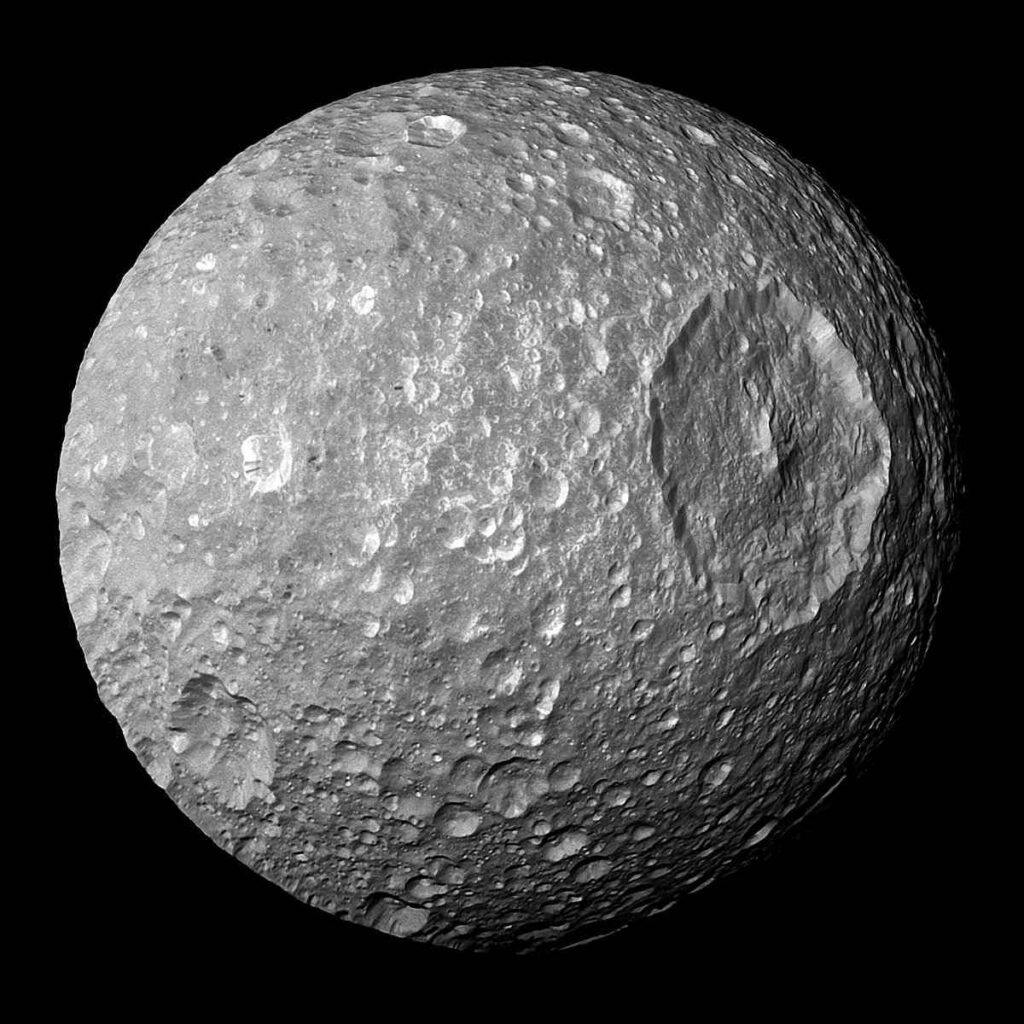
Mimas is Saturn’s smallest moon coming in at only 396.4km, which is actually smaller than quite a few of the largest craters in our solar system. This obviously isn’t something you could say about most other moons though.
It also has an almost uncanny resemblance to one od the most well known entities in the fictional universe of star wars, the death star, which of course is as result of the Herschel crater that covers roughly a third of the objects surface.
The reason why Mimas finds itself on this list is not because of how cool it looks (you gotta admit it does look pretty darn cool) but more so due to there potentially being a subsurface ocean roughly 25 – 30km under the surface of its crust. Do keep in mind that at this current moment it is an uncertain theory.
Mimas is said to mostly be made of ice, which could mean that tidal forces of energy projected from Saturn could result in some liquid forming closer to the center however, if Mimas does have liquid water beneath its crust, the impact ridden surface much like Callisto (implying no geological activity) and no atmosphere wouldn’t make it a very habitable place for us.
Of course if there is liquid water under the crust, in theory life could thrive there even if it is very unlikely to be intelligent life.
9. Ganymede
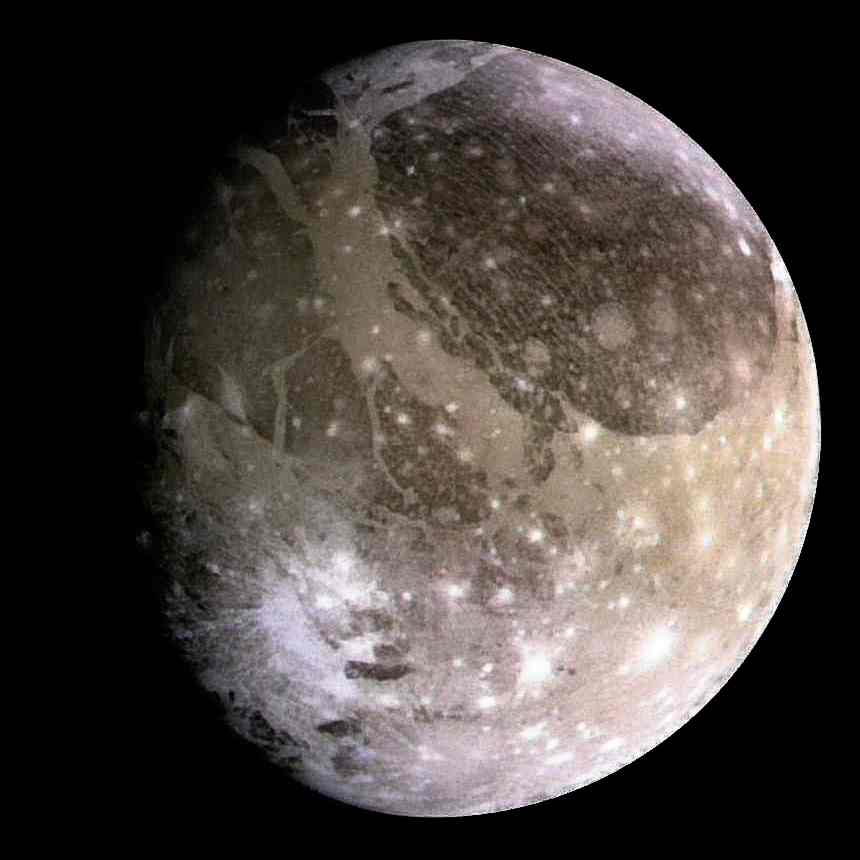
Ganymede is both Jupiter’s largest moon and the largest moon in our solar system coming in at a massive diameter of 5268.2km. This makes it just a bit bigger than Mercury but around 1000km smaller than Mars.
In short it’s pretty darn huge.
There are a three major factors that make Ganymede a potentially habitable place, with the first being that it’s the only moon we know of with a magnetic field. What a magnetic field does is protect or more so minimise the effect of the Sun’s radiation on the moons surface.
Secondly, much like it’s companion satellite Callisto, scientists believe that there may be liquid water under its icy crust. The last factor which isn’t necessarily the strongest case but, is still quite a positive is the fact its atmosphere contains oxygen.
Of course there isn’t a lot of it but, oxygen being present within the atmosphere is always a good sign.
10. Venus

Although venus at its current state is easily the hottest object in our solar system (not including the sun of course) you would think that making the planet habitable again would be a major task. To that I say you’d be totally right…
However, a scientist called David Grinspoon, astrobiology curator at the Denver Museum of Nature and Science, found that at a specific region of Venus’ atmosphere, the planets temperature is actually quite tolerable.
This region may be tolerable enough to contain some form of microbial life but, as for whether Venus is habitable for us, not a chance… Well at least not until we figure out how to cool the planet down and terraform it into being some what liveable.
11. Pluto
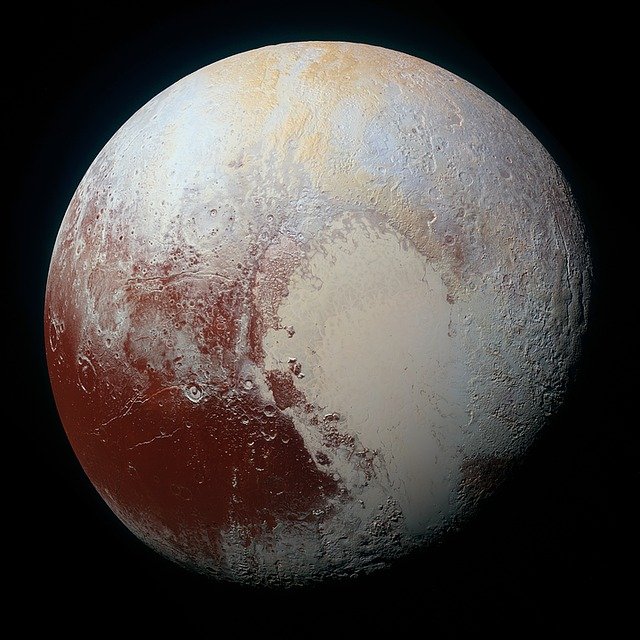
Formerly the 9th main planet in our solar system and now the most famous dwarf planet around, Pluto, has some credence in being habitable even if it barely makes the cut (which honestly can be said for the majority of the celestial objects on this list lol).
Pluto is mostly made of rock solid ice so, the chances of it supporting life on the surface are slim to none. However, many scientists do believe the planet is warmer in the interior meaning there could be liquid oceans between Pluto’s crust and core.
A few other elements that add to this case is Pluto’s thin atmosphere. It appears to be made of nitrogen, methane, and carbon dioxide which actually allows it to have a blue sky look much like Earth.
Even with all these pros (you could say) in favour of Pluto actually supporting life the fact of the matter is that with average temperatures of around – 226 to -240 degrees Celsius the chances of life actually blooming on the Plutonian surface isn’t very high.
Conclusion
Our solar system has quite a few entities that could potentially support life, even if the chances of that actually being the case are very small. The places with the highest potential are those nearest to the goldilocks zone such as Mars, Ceres and Ganymede but, besides Mars, all the other entities are still quite lacking.
Therefore, don’t expect any of these planets to be habitable any time soon, especially not within our lifetime…

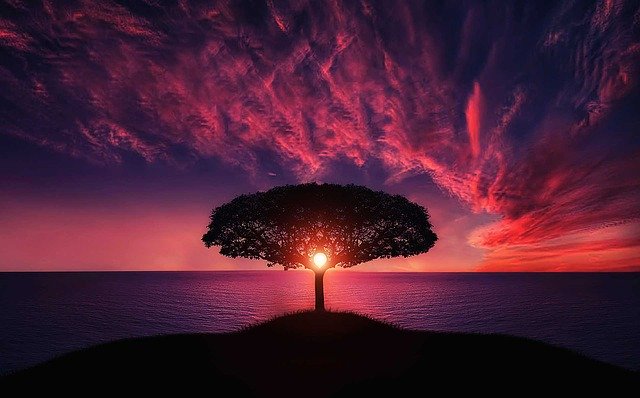
It looks like you’ve misspelled the word “effecient” on your website. I thought you would like to know :). Silly mistakes can ruin your site’s credibility. I’ve used a tool called SpellScan.com in the past to keep mistakes off of my website.
-Robert
Appreciate the input there Robert 😉
It looks like you’ve misspelled the word “effecient” on your website. I thought you would like to know :). Silly mistakes can ruin your site’s credibility. I’ve used a tool called SpellScan.com in the past to keep mistakes off of my website.
-Randy
I appreciate the input randy.